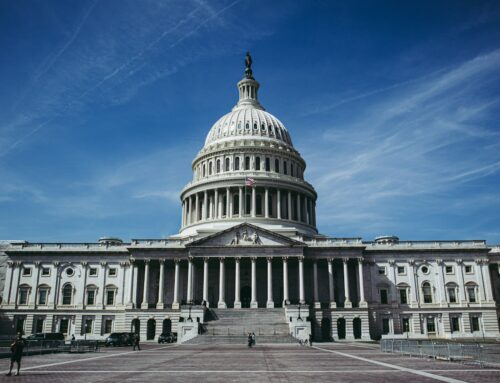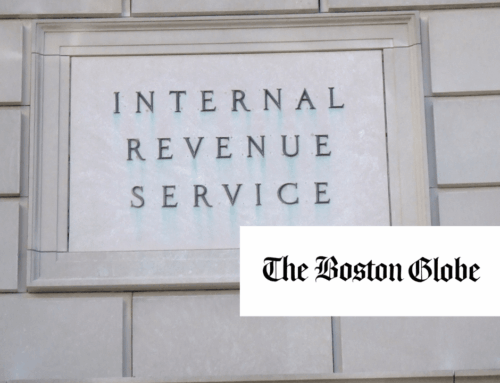View/Download this article in PDF format.
Washington’s last minute deal to avert the fiscal cliff saw the return of many never-ending “temporary” tax breaks. While the bulk of the bill’s $3.9 trillion price tag is due to making permanent the Bush/Obama tax cuts, patching the Alternative Minimum Tax, and estate tax changes, Congress chose to once again “temporarily” extend – or in many cases resurrect – a number of special-interest tax breaks that never really go away. These provisions are known to latch themselves onto must-pass legislation; last hitching a ride on the deal to extend the Bush tax cuts in 2010.
Added together, these narrow provisions result in more than $70 billion worth of tax breaks without any real debate to determine if they are the best way to spur the economy or meet other goals.
The bill President Obama signed extends these tax cuts for two years. However, all of the following tax breaks actually expired at the end of 2011, so Congress granted one year of extension retroactively (for 2012) and one year going forward (2013). They are all reset, and will now expire on December 31, 2013.
It is also important to note that the price tag for each of these will be much higher, as Congress continues to extend them into the future. In fact, to mask the total cost, some of these breaks actually turn revenue positive in later years. We have excluded that revenue from the 10-year total.
- Deduction of State and Local General Sales Taxes
This provision gives taxpayers the option to deduct itemized state and local sales taxes from their federal income tax, but only if they do not deduct their state income tax. This was eliminated from the federal tax code in the 1986 reforms, but was brought back to life in recent years. Major beneficiaries are the residents of states that don’t have state income tax: Alaska, Florida, Nevada, South Dakota, Texas, Washington, and Wyoming.
Estimated cost to taxpayers: $5.538 billion over ten years (through 2015). Cost in 2013:$2.86 billion
- Research & Development Tax Credit
Companies doing research and experimentation in the United States receive a lucrative tax credit. This tax credit generally goes to larger corporations, and companies that have benefited from this provision in the past include Microsoft Corp., Boeing Co., United Technologies Corp., Electronic Data Systems Corp. and Harley-Davidson.
Estimated cost to taxpayers: $14.324 billion over ten years. Cost in 2013: $6.232 billion
- Seven Year Straight Line Cost Recovery Period for Motorsports Entertainment Complexes
Staving off IRS rules to the contrary, owners of motorsports entertainment complexes (aka NASCAR tracks) can write off the cost of their facilities over seven years—instead of the standard 39 years for nonresidential property and 15 years for “improvements” (such as fences and roads)—as long as the venue hosts an event within three years of its completion. Such an accelerated depreciation schedule increases the value of the yearly deduction for owners. Track owners have also received plenty of other tax breaks over the years from states and localities eager to attract speedways. The provision encompasses all facilities including grandstands, parking lots, and concession stands.
Estimated cost to taxpayers: $78 million over ten years. Cost in 2013: $46 million
- Enhanced Charitable Deduction for Contributions of Food Inventory
Congress has routinely extended an enhanced deduction for the charitable contribution of food inventory. Under this provision, the food must be “apparently wholesome food.” However, “wholesome” food isn’t necessarily healthful or even edible and is defined as “food intended for human consumption that meets all quality and labeling standards imposed by Federal, State, and local laws and regulations even though the food may not be readily marketable due to appearance, age, freshness, grade, size, surplus, or other conditions.”
Estimated cost to taxpayers: $314 million over ten years (through 2014). Cost in 2013: $218 million.
- Special Expensing Rules for U.S. Film and Television Productions
In an effort to keep film and television production in the United States, filmmakers can immediately deduct significant costs for most film and television productions. Producers can elect to expense in the current year the first $15 million of production costs incurred in the U.S. ($20 million if the costs are incurred in economically depressed areas in the U.S.). This can be used if at least 75 percent of the costs are for services performed in the U.S., and is available for both blockbusters and those that go “directly to video cassette or any other format.”
Estimated cost to taxpayers: $248 million over ten years. Cost in 2013: $266 million.
- Temporary Increase in Limit on Cover Over of Rum Excise Tax Revenues to Puerto Rico and the Virgin Islands
The bill extends the provision increasing the excise tax cover over payment to $13.25 per proof gallon for rum distilled in Puerto Rico and U.S. Virgin Islands.
For many years, rum imported to the U.S. was subject to a $10.50 excise tax per proof gallon. For deficit reduction purposes, the excise tax was increased in 1985 and again later to its current level of $13.50. Under long-standing U.S. law, Puerto Rico and U.S. Virgin Islands are entitled to a $10.50 “cover over,” or rebate on the excise taxes. The U.S. has routinely extended a “temporary” additional cover over of $2.75 (total $13.25), leaving only 25 cents going into the U.S. Treasury. Major beneficiaries of this provision are the liquor companies Diageo and Bacardi. In fact, the USVI is using their future cover over payments to back bonds used to build Diageo (the Britain based world’s largest liquor conglomerate) a new distillery to induce it to shift Captain Morgan production from another U.S. territory, Puerto Rico.
Estimated cost to taxpayers: $222 million over ten years (through 2014). Cost for 2013: $199 million.
- Extension of American Samoa Economic Development Credit
In general, this credit allows certain corporations operating in American Samoa to offset a portion of their U.S. tax liability on income earned in American Samoa from active business operations, sales of assets used in a business, or certain investments in American Samoa.
Estimated cost to taxpayers: $62 million over ten years (through 2014). Cost in 2013: $38 million.
- Incentives for Alternative Fuel and Alternative Fuel Mixtures (other than liquefied hydrogen)
Both the alternative fuel credit and the alternative fuels mixture credit were enacted by the 2005 Highway Bill to provide a tax credit for alternative fuels, which includes high carbon fuels produced from coal, oil shale, and tar sands. Companies that produce unconventional fuels receive a production tax break of 50 cents per gallon; companies that blend traditional fossil fuels with small amounts of high carbon fuels receive the same tax benefit.
Estimated cost to taxpayers: $360 million over ten years (through 2014). Cost in 2013: $305 million.
- Alternative Fuel Vehicle Refueling Property (non-hydrogen refueling property)
Facilities dispensing certain alternative fuels receive a refueling property credit. This provides a 30% tax break for gasoline stations or other facilities installing biodiesel or 85% ethanol (E85) blender pumps or repowering sites for electric vehicles. Stations dispensing natural gas, liquefied natural gas (LNG), and liquefied petroleum gas (LPG) are also eligible. The credit was first passed in the 2005 energy bill.
Estimated cost to taxpayers: $44 million over ten years (through 2015). Cost in 2013: $34 million.
- Plug-in Electric Motorcycles and Highway Vehicles
This credit goes to electric plug-in motorcycles and 3-wheeled vehicles that can be used on a highway. Unlike previous iterations of this credit, this version no longer includes non-highway, low speed vehicles (such as golf carts). This credit was actually in an earlier Senate Finance Committee package only to be resurrected in a tighter provision.
Estimated cost to taxpayers: $7 million over ten years (through 2015). Cost in 2013: $1 million.











Get Social